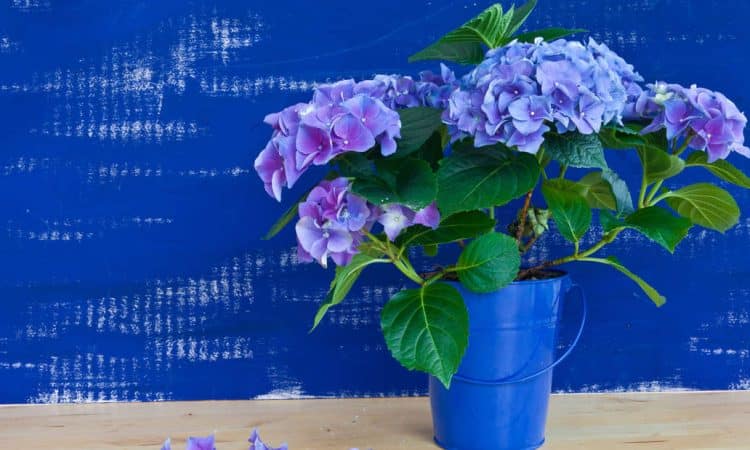
Hydrangeas are absolutely amazing! They’re one of the most popular plants among amateur gardeners for a reason. They’re so beautiful and they need a lot of water, especially in summer. So, we’ll tell you how to water them properly so they’ll keep on looking gorgeous!
Farmers’ hydrangea, plate hydrangea, panicle hydrangea – this popular garden plant comes in many colors, shapes and sizes. It is particularly robust and easy to care for, and its inflorescences look attractive and decorative in the garden even when wilted. However, there are a few things you can do wrong when watering hydrangeas, as it is not for nothing that their botanical name “Hydrangea” translates as “water jug”.
How do I water a hydrangea correctly?
A hydrangea really needs a lot of water, so you should always keep a close eye on it in midsummer. If its leaves are drooping by midday and the soil is dry, it urgently needs water, even if you have already watered it in the morning. When watering, make sure that the soil is evenly moist and not watered on one side. You can find outhow to properly fertilize a hydrangea here.
Because hydrangeas need a lot of water, it can sometimes be necessary to water them twice on hot days. But beware, like all plants, they do not tolerate waterlogging at all. Also make sure that they are not too sunny, as these beautiful plants prefer partial shade, as they burn easily in full sun and need even more water.
Is it better to water hydrangeas from above or below?
It is important never to water the hydrangea from above, but to distribute the water directly on the ground beneath the plant. Watering from above encourages mildew and can destroy the flower. Hydrangeas also like soft water without lime, so it is best to use rainwater or water from a pond to water your hydrangeas. If this is not available, you can also use filtered tap water.
A great trick for hot summer days: Simply place a small bucket with a hole next to the hydrangea in the bed or pot and then fill it with water. This allows the water to drip slowly through the hole into the root area of the plant and help it through the day. Hydrangeas like sandy or clay soils because they store water well. Spreading mulch on the surface can also be helpful.
Can hydrangeas be given too much water?
Yes, even with thirsty hydrangeas this is possible. Drooping and yellow rotting leaves can indicate root rot caused by waterlogging. Waterlogging develops as a result of too frequent watering in the flower pots or in the soil at the plant’s location. It can also form deep inside a flower pot, where it is not easily detected. 24GARTEN knows what to do if your hydrangea won’t bloom.
Waterlogging affects the sensitive roots, they start to rot and eventually die. Therefore, even with water-hungry hydrangeas, make sure that the plant is not flooded and that the water can seep in easily. If your hydrangea is clearly suffering from waterlogging, the only thing to do is to remove the wet soil, dry the plant and roots thoroughly and then repot it.
How long can hydrangeas survive without water?
Not for long. If you don’t water your hydrangeas for 1-2 days in summer, they will start to dry out. The best thing to do is to cut off the dry flowers and hope that the plant will sprout again. The dried flowers make wonderful decorations for your home. It is important to water the plant regularly into the fall so that you can enjoy it again next summer.
By the way, panicle hydrangeas (Hydrangea paniculata) are particularly easy to care for. They can even withstand a few days of drought and still bloom profusely. If you overwinter your hydrangea in a sheltered place, you can enjoy this beautiful plant for many years to come. It is also important to prune your hydrangeas regularly, you can find out how to do this here. (khei)

